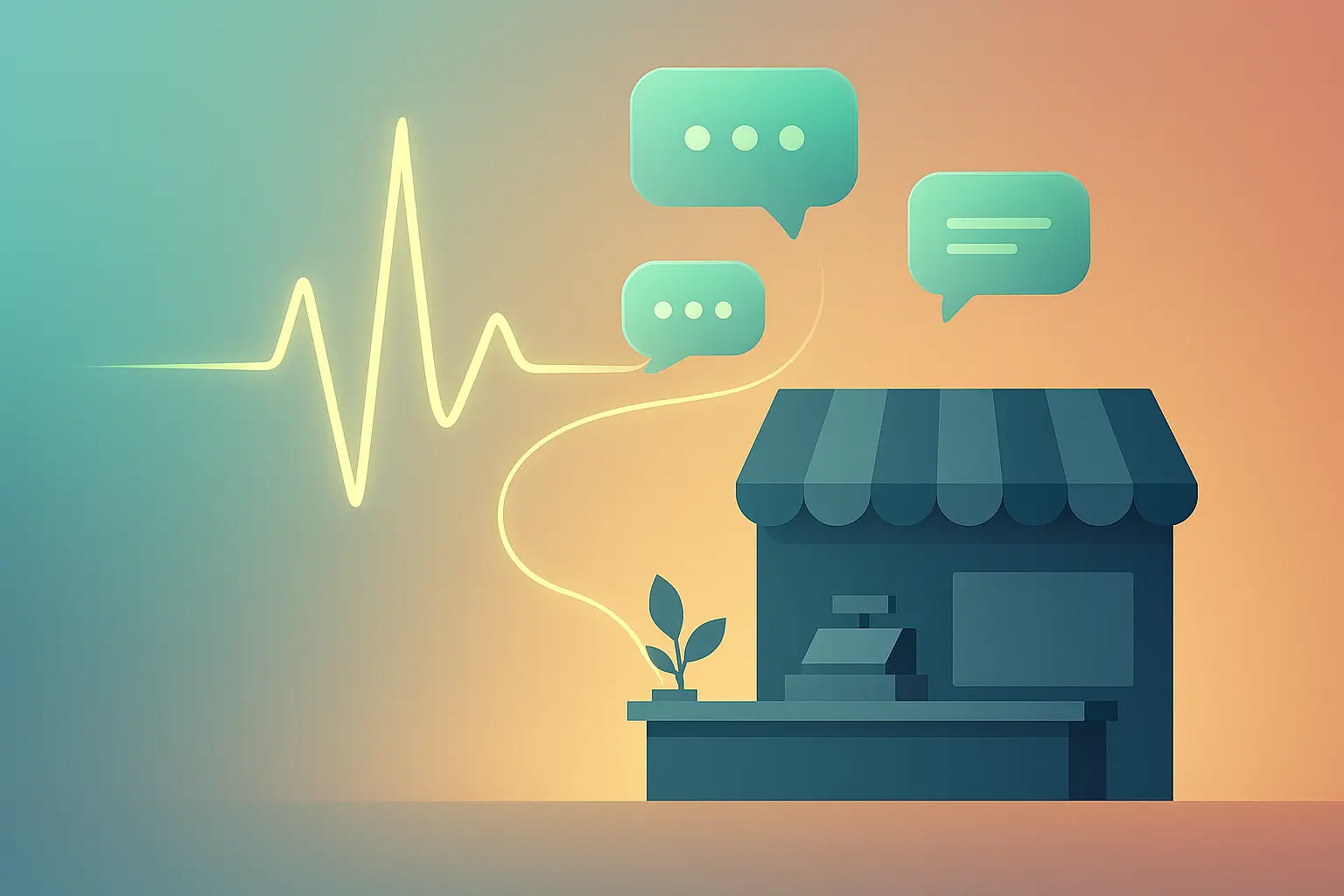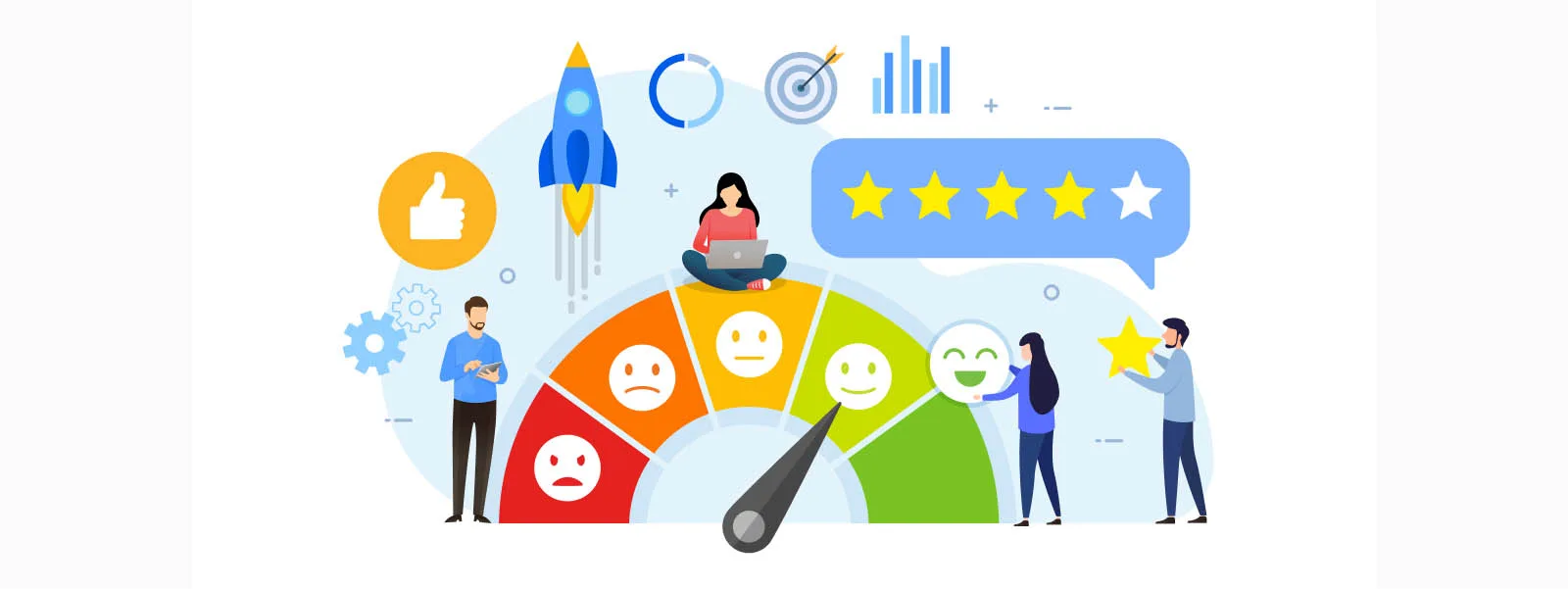What is Customer Connection? 10 Ways to Connect with Customers
- May 2, 2024
- 15 mins read
- Listen

- Selling products or services to customers is not the only important thing for business.
- Forging customer connections is way more important than it’s generally understood.
What is Customer Connection?
Customer connection is the emotional and psychological bond customers form with a brand. Such bonds are often built over time through consistent and positive experiences, interactions, and communication. The quality of products or services a business offers is a big contributing factor in the kind of customer connection it enjoys. However, such relationships often go beyond the transactions and involve a deeper level of engagement and loyalty.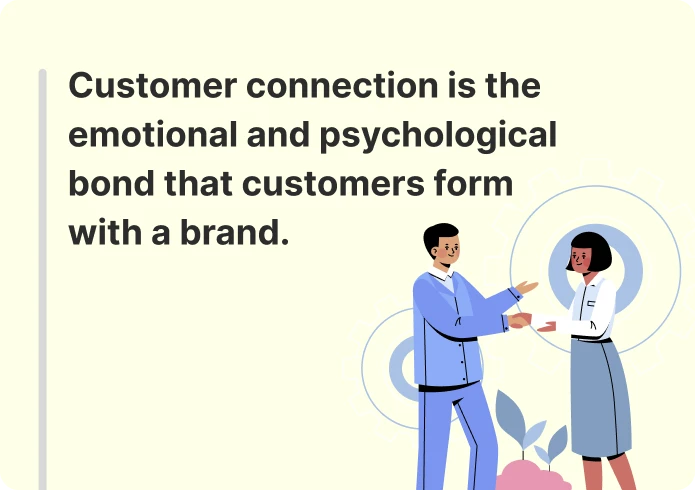 Customer connection can be based on several things, including:
Customer connection can be based on several things, including: - The various engagement that occurs throughout the customer journey.
- The diverse efforts in understanding and addressing customer needs.
- A consistent focus is adopted in enhancing the overall customer experience.
- The steps to fostering meaningful relationships over time.
Importance of Customer Connection
We already know that winning new customers is considerably costlier than retaining existing ones. But have you wondered why? Well, existing customers feel connected with the business and they stick for long as they get value.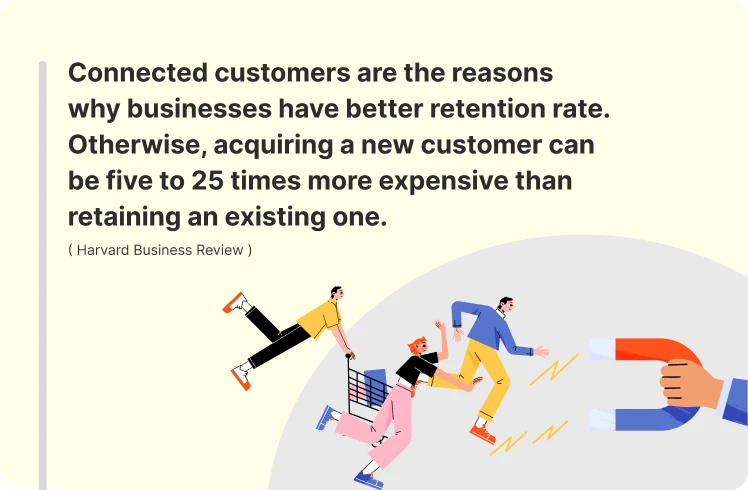 There are many other reasons as well that show why customer connection is important for businesses:
There are many other reasons as well that show why customer connection is important for businesses: - Customer connections foster loyalty and loyal customers make repeat purchases and recommend the brands to others.
- Connected customers spend more money over time which gives businesses an opportunity to boost customer lifetime value.
- Connected customers feel higher levels of satisfaction and are more likely to turn into brand advocates.
- Happy customers share positive experiences with others that bring word-of-mouth referrals for the business.
- Businesses that focus on forging customer relationships can excel in the market and gain an edge over competitors.
- Connected, satisfied, and engaged customers are less likely to churn easily and businesses can count on them for support in tough times.
Key Stats on Customer Connection
- Connected customers are the reasons why businesses have better retention rates. Otherwise, acquiring a new customer can be five to 25 times more expensive than retaining an existing one. ( Harvard Business Review )
- Customers who feel connected to a brand are more likely to become brand advocates. In fact, 71% of consumers who have had a positive experience with a brand are likely to recommend it to others. ( Big Commerce )
- Prioritizing customer connections can help minimize churn rates. A study says 68% of customers leave a company that is indifferent to them. ( Forbes )
- Companies that focus on customer connections often stay ahead of the race. A study says 73% of consumers agree that ‘overall experience’ is an important factor in their purchasing decisions. ( PwC )
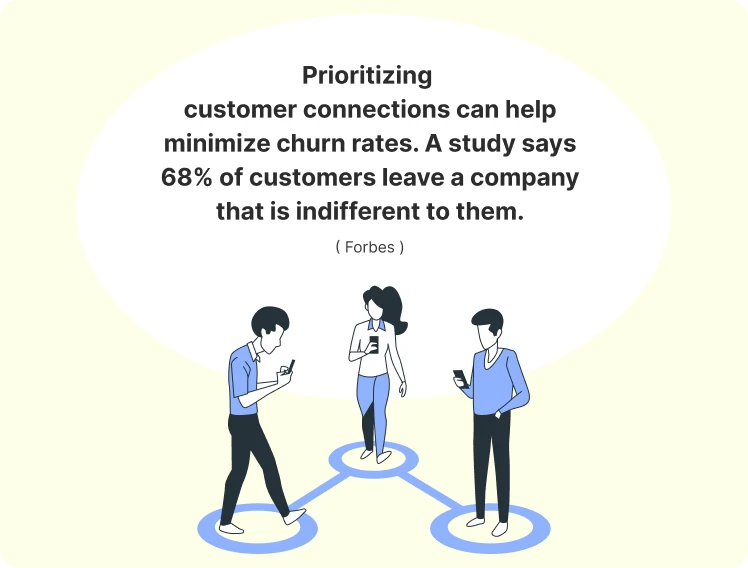
Key Elements of Connected Customer Experience
Customers today don’t just rely on one channel alone to reach a business. With so many different channels available around, they can use multiple channels for engagement. That’s why it would be ideal for companies to prioritize customer experiences across touchpoints. Let’s look at the key elements of connected customer experience –- Omni-channel Presence – Multiple channels are key for delivering a connected customer experience. Then customers have the flexibility to choose the most suitable channel and expect interactions to stay consistent across touchpoints.
- Unified View of the Customer – Customer experiences can be personalized only when the business has access to a unified view of the customer and information. This approach prepares it to gain deep insights into past data and preferences.
- Seamless Transitions through Channels – A connected experience can never happen unless customers can seamlessly transition between channels. Even when customers move from one channel to another, their data and interactions stay intact.
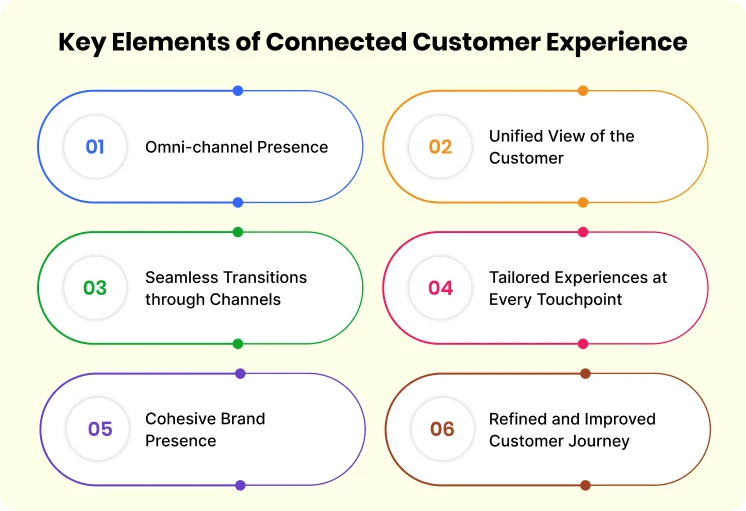
- Tailored Experiences at Every Touchpoint – Customers feel a sense of connection with a brand that tailors experiences based on their interests and specifications. Such experiences at every journey touchpoint can greatly enhance customers’ experience with the brand.
- Cohesive Brand Presence – For businesses, it’s important to keep the messaging and branding consistent and uniform across all channels. This can reinforce the brand values and lead to a cohesive presence.
- Refined and Improved Customer Journey – Offering proactive and efficient support across all channels can help fix customer pain points. While offering support, a business can also gather feedback that can be used to refine and improve the customer journey.
10 Tips on How to Connect with Customers
Customers have high expectations. They also want exceptional service at each stage of their journey with a brand. If a business caters to them well and serves their needs, they are less likely to switch to a competitor. Here are 10 tips on how to connect with customers.1. Learn What Your Customers Value
What makes customers happy? This information is something that a business needs to collect to better understand and serve its customers. After all, products, services, and experiences are three key factors that customers cherish the most in their engagement with a brand. If your product lacks quality, forging connections will be hard no matter how much you try. The same is true with service and experience. So, it’s important to first understand what customers value the most in your products and services. Giving customers value is one of the essential aspects of building a connection with them. It’s therefore important to know what customers like and what not. Based on that, your business can always deliver value more often and connect with customers at a deep level.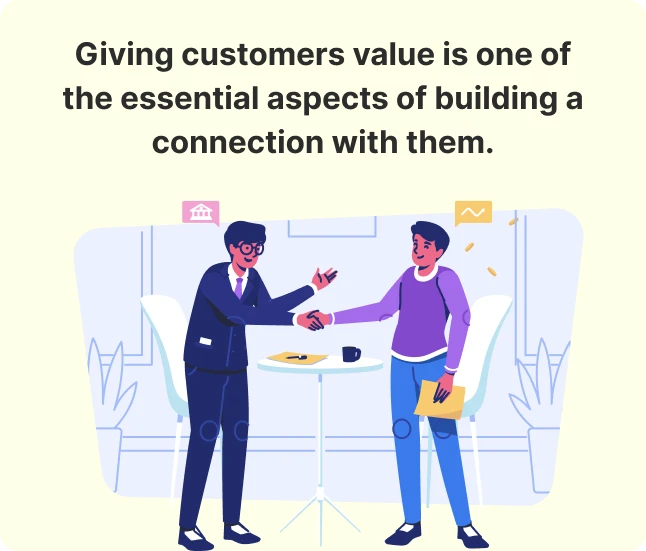
Key Strategies
- Understand your customers’ needs and pain points
- Use a survey to rate your customer’s level of satisfaction
- Track customer interactions across channels to gain insights
2. Develop a Customer-Centric Approach
Without a customer-first approach, can your business build a strong customer connection? No, it can’t. Unless your business puts the customer’s interests at the center of attention, it can never win their confidence. This is why developing a customer-centric approach is vital to winning loyal customers. A customer-centric approach shows you take an effort to understand your audience on a deep level. This approach also prioritizes customer preferences and pain points. You develop a customer-focussed mindset and each department in your organization – from top to bottom – works to delight customers.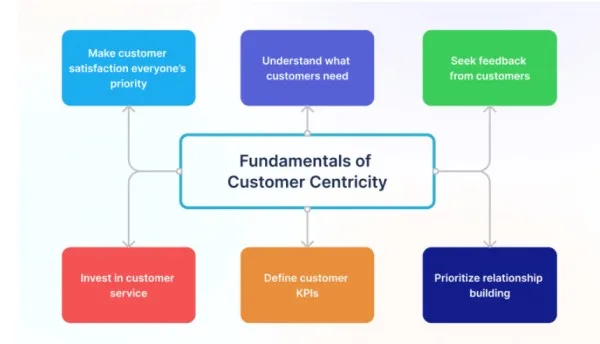
Key Strategies
- Use customer research to gather information about your audience
- Identify customer needs for each stage of their journey
- Develop products and services specific to customer needs
3. Focus More on Personalized Communication
Gone are the days when generic messages ruled the marketing landscape. Times have changed, and so do the needs and preferences of customers. Today, customers prefer personalized communication as it strikes them at deep levels. Such communications are tailored based on the specific interests of individual customers. From emails to social ads, and product recommendations, personalization can take many forms. The focus is to create personalized experiences that fit well with customers and serve their needs perfectly. This strategy is very powerful in building customer connections and gaining their loyalty to your brand.Key Strategies
- Use data analytics tools to gain insights into customer’s preferences
- Segment your audience based on interests and demographics
- Create targeted marketing campaigns for each segment
4. Anticipate the Customer’s Needs
Customers feel engaged and connected with a brand that understands their needs. They also stick and show loyalty when a business attempts to deliver value to them. Anticipating buyer’s needs is also the key to building lasting relationships with them. Similarly, the churn rate is minimized when a business consistently delivers on customer needs. However, many businesses ignore customer needs and rather focus more on other aspects such as product development etc. This approach is not right considering how meeting customer needs is the only way to keep them happy.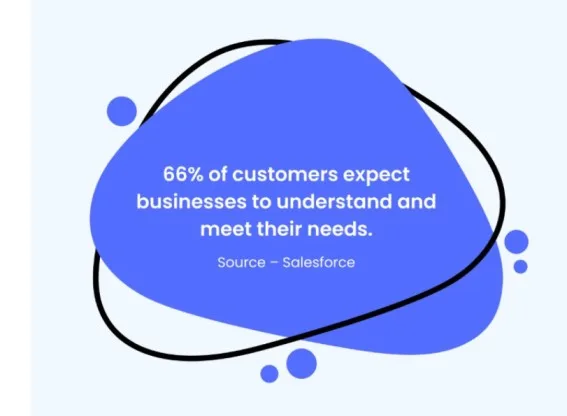
Key Strategies
- Conduct regular surveys, and seek customer feedback to see how you can improve their overall experience with the brand
- Analyze customer pain points at each stage of their journey to gain a better knowledge of problems they may face
5. Be Always Available for Customers
Addressing customer problems and pain points is the most important aspect of building a connection with them. The more customer issues and concerns you solve, the better connections you will form with them. When it comes to solving customer issues, the best approach is to be always available for them. It’s equally important to address customer issues promptly and reduce wait times because customers hate to wait.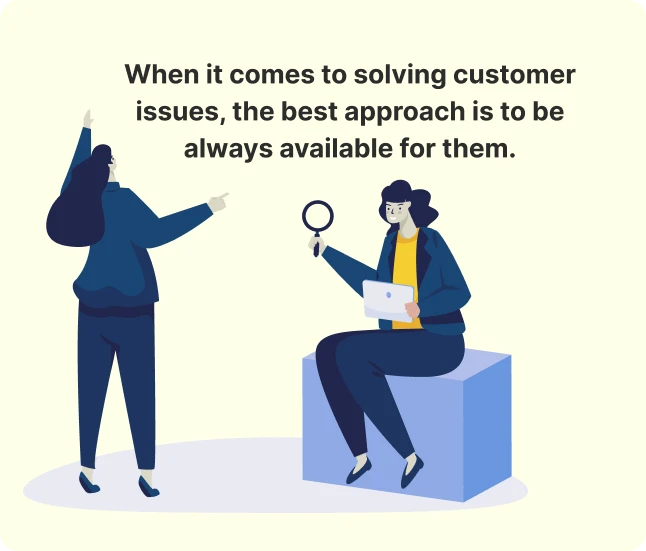
Key Strategies
- Establish quick support
- Proactively reach customers
- Respond quickly on all channels and platforms
- Provide customers with information at each stage of the journey
6. Understand Customer Diversity
No two customers are alike. Each of them has unique needs and preferences. It’s therefore essential to understand customer diversity. This approach can help you connect with your customers on a deeper level. It will also help you adopt a more nuanced and personalized approach to building connections with them. Understanding customer diversity means you need to know how each segment of your customers can have varied preferences. They may also vary based on demographics, psychographics, and purchasing behavior.Key Strategies
- Adopt a multi-channel engagement strategy for your audience
- Personalize customer experiences by tailoring your approach to individual customers
7. Focus on Customer Convenience
Customers look for convenience in every aspect of their engagement with a brand. The more a business makes things convenient for them, the more it gains. When we talk about “convenience”, it means ensuring a hassle-free experience for customers at each touchpoint. It also means effortlessly guiding customers through different stages of the sales funnel. Make sure all your communications and interactions are aligned with the specific needs of your audience. Convenience also means giving your customers ease of connecting to your business for support.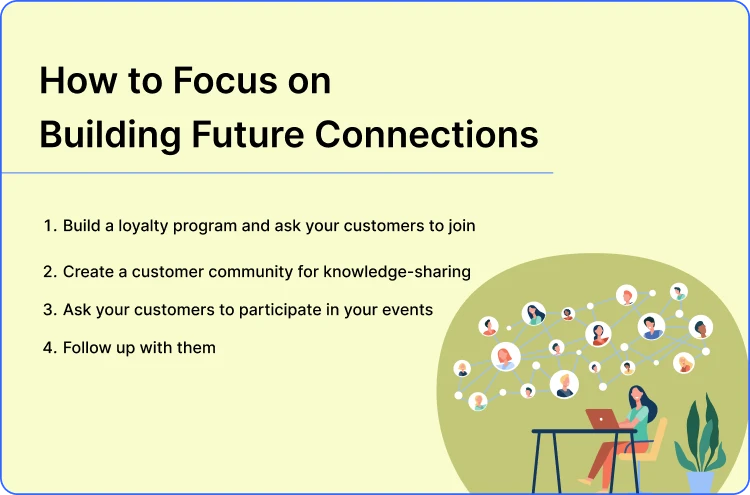
Key Strategies
- Keep all your processes and information simple to access and navigate for customers
- Implement self-service resources so that customers can solve basic problems easily
- Prioritize customer needs first and empathize with them
8. Gather Customer Feedback After Every Interaction
Feedback is the best way to understand whether customers are getting value or not. It’s also helpful to understand and identify areas for improvement. When you collect feedback regularly, it also provides you with deep insights into customer needs, resulting in opportunities for product or service enhancement. Collecting customer feedback after every interaction is vital for knowing the likes and dislikes of your audience. It prepares you to anticipate customer preferences better and serve them in the way they expect. Feedback can also serve as a guideline for directing your communication with customers.Key Strategies
- Send your customer a survey and seek their opinions about your product or service
- Run simple polls on social platforms so that more customers can participate
- Incentivize customers for leaving feedback
9. Prioritize Omni-channel Engagement
Adopting a single-channel approach for customer engagement is not the right strategy in today’s time. After all, customers now use more than one channel to connect and engage with a brand. They also want the freedom to choose the channel of choice in connecting with a brand. It shows how using multiple channels is the key to a successful customer engagement strategy. If your business does not have a presence across channels, it may risk losing customers to competitors. What’s more, it’s equally important to connect all the channels to offer a seamless experience for customers.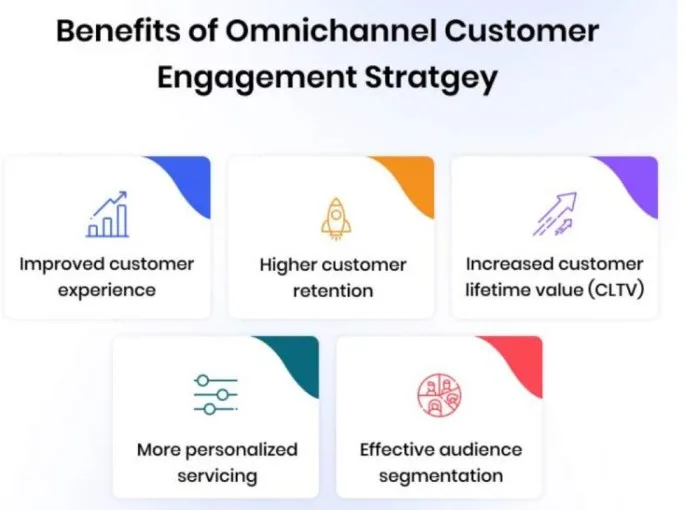
Key Strategies
- Be available on different channels so that customers can easily find your brand on the channel of choice
- Integrate all the channels to let customers move between them and have a seamless journey with your brand
10. Focus on Future Connections
Customer engagement should be an ongoing process for your business. It should never end with the purchase itself. The ideal approach is to keep the door open for future connections. Many businesses make the mistake of not following up with their customers, so they fail to build lasting connections. Make sure you keep the window open for future engagement. Once you adopt the strategy of reaching out to customers post-purchase, they will also reciprocate and find ways to get back to you. It’s essential to encourage them to reach out to you for any query or concern.Key Strategies
- Build a loyalty program and ask your customers to join
- Create a customer community for knowledge-sharing
- Ask your customers to participate in your events
- Follow up with them
Phrases that Immediately Create Connection With Customers
The way a business approaches customers and engages with them goes a long way in creating connections. Being mindful of customers’ problems and offering them help as and when due is essential to creating immediate connections. Here are phrases that can help you immediately create connections with customers:- “We value your feedback.”
- “We’re committed to serving you well.”
- “Your feedback matters a lot to us.”
- “We appreciate your effort in reaching us.”
- “Your satisfaction is our foremost priority.”
- “Your input is invaluable to us.”
- “We always look forward to hearing from you.”
- “We’re immensely grateful for your continued support and loyalty.”
- “Thank you for choosing us.” ( Your company name )
- “How can we make your day better?”
- “Your suggestions help you improve further.”
- “Leave this to us and we’ll fix that for you.”
- “We’re sorry that you have to experience that.”
- “Is there anything else you need help for?”
- “Don’t worry, we’re in this together.”
- “Let us find the best possible solution for your problem.”
Best Practices For Customer & Client Connections
It requires a strategic approach to build strong customer & client connections. Your business not only needs to adopt a customer-first philosophy but also ensure value with each interaction. Here are the best practices for building customer & client connections:- Active Listening – Active listening is the foundation of strong customer connections. It helps a business understand customer concerns better and be empathetic to their cause.
- Responsiveness – Being responsive to customer requests and inquiries and offering them quick solutions to their problems is vital to building powerful connections with them.
- Transparency – Providing clear information about your products and policies builds credibility. It also lays the foundation for emotional connection with customers.
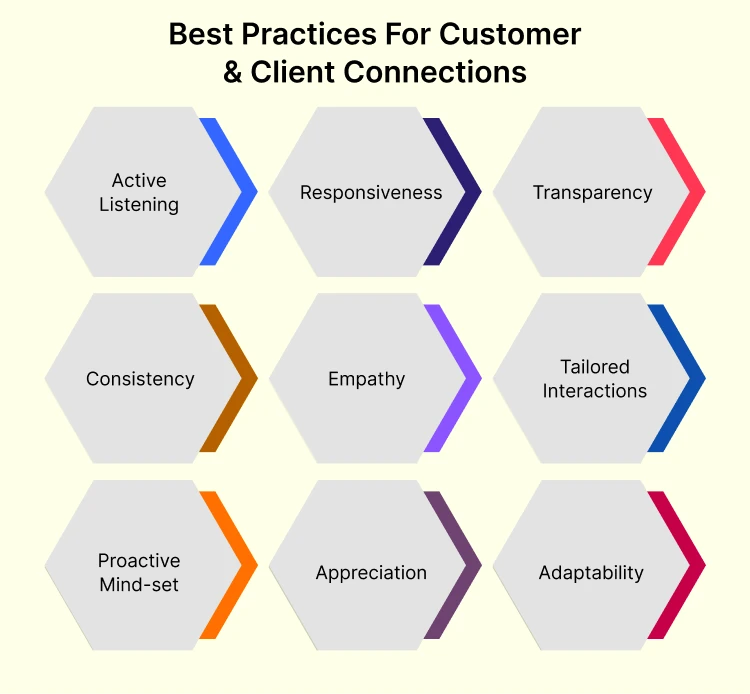
- Consistency – Provide a consistent experience for customers across all channels as it reinforces your brand image and builds trust.
- Empathy – Acknowledging customers’ concerns and showing empathy is important for connecting with them at a personal level and building long-lasting relationships.
- Tailored Interactions – Addressing customers by name, leveraging their previous interactions, and offering customized solutions are some of the basic elements of a tailored approach toward them.
- Proactive Mindset – Rather than waiting for customers to come to you, make sure you proactively reach out to them and solve their problems. This will boost satisfaction and build connections.
- Appreciation – Recognize the value your customers bring and also show appreciation for their continued support and patronage.
- Adaptability – Always be flexible and adaptable in handling customer needs and preferences as they tend to change over time.


